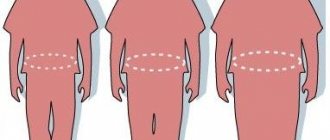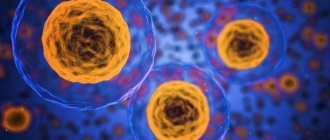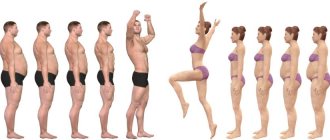Link between vitamin D deficiency, obesity and various diseases
Over the past three decades, obesity has been widespread worldwide, along with an increase in type 2 diabetes and hypovitaminosis D. If current trends continue, the World Obesity Federation estimates that more than one billion adults will be obese, and 2 .7 billion people will be overweight by 2025. Because obesity is associated with chronic diseases such as some cancers, cardiovascular disease and type 2 diabetes, the disease is of increasing importance. Recently, vitamin D deficiency in the development of obesity has attracted attention. It is clear that a deficiency of circulating vitamin D is associated with obesity and type 2 diabetes, and hypovitaminosis D and obesity result in such common diseases as type 2 diabetes, cardiovascular disease and some types of cancer. High vitamin D deficiency worldwide is generally the result of decreased production in the skin due to decreased sun exposure and decreased vitamin D intake. In areas where the sun does not shine as often, vitamin D is not photosynthesized properly, so European populations countries are commonly deficient in vitamin D. Vitamin D deficiency occurs even in parts of the world that are considered deserts and have long day lengths. It is well known that vitamin D is involved in bone mineralization, but recent studies have shown that hypovitaminosis D is responsible for more pathological conditions than previously thought. For example, metabolic syndrome, insulin resistance, and diabetes mellitus can potentially develop as a result of vitamin D deficiency.
What it is
Vitamin D is the collective name for a group of calciferols - fat-soluble organic compounds. For humans, the most significant active varieties are D2 - ergocalciferol, which enters the body only with food, and D3 - cholecalciferol, supplied both with food or supplements, and synthesized by skin cells in the light. Some researchers even find support for the hypothesis that vitamin D can be considered an indicator of impaired health and a potential universal remedy for its restoration.
Vitamin D is necessary for the complete absorption and assimilation of calcium, without which mineralization and bone growth are impossible. D also regulates the metabolic metabolism of phosphorus compounds and is involved in some other biochemical reactions, the research of which is ongoing.
“Vitamin D for the body is like gasoline for a motor,” explains endocrinologist Olga Shamrina. - In fact, it is a prohormone, it gives effects similar to hormonal ones. For example, it regulates the formation of the sex hormones testosterone and estrogen from cholesterol. Participates in the synthesis of thyroid hormones - the main anti-stress center of the body, responsible for reducing the perception of stress. Vitamin D corrects insulin levels in the blood, speeds up metabolism, promotes the absorption of beneficial elements from food and at the same time lose weight. It regulates all human life at the cellular level, including acting as an immunomodulator.”
Research on the relationship between body mass index and vitamin D levels
Danish scientists associated with Aarhus University found 55 previously published studies in which researchers measured both vitamin D levels and BMI in large groups of people. The Danes summarized the results of these studies and analyzed them again.
Of the 45 studies, data on people without diabetes was selected and pooled. The researchers then divided the data into three groups: the first group of data was for people with a BMI of 18-25, the second for people with a BMI of 25-30, and the third for people with a BMI over 30 (who were obese).
In all groups, the level of vitamin D in the blood of the subjects was below optimal, but in the group with the highest BMI the relationship was the strongest.
The researchers did the same with data from people with diabetes and came to the same conclusion. In this group, the association between vitamin D and BMI was even stronger than in the group without diabetes. Therefore, it is suggested that individuals with a BMI greater than 30 should take vitamin D more frequently and in higher doses.
Conclusion
This review provides evidence that serum vitamin D levels are inversely associated with BMI in diabetic and nondiabetic patients. The strong inverse correlation between vitamin D deficiency and BMI may be due to the association of vitamin D deficiency and obesity with a number of diseases. The coexistence of these two factors may be important for the development of certain pathological conditions, for example, type 2 diabetes mellitus is closely associated with obesity and vitamin D deficiency. It has previously been noted that the synergistic effect of obesity and vitamin D deficiency may contribute to the development of insulin resistance.
Epidemiological studies like this show only associations, but not every association is a cause-and-effect relationship. However, since other studies show that vitamin D affects how muscles metabolize fat and energy, it is possible that low vitamin D levels are indeed a factor in obesity.
Shortage
What are the consequences of a lack of vitamin D in the body?
Symptoms
In addition to excess weight, deficiency of ergocalciferol and cholecalciferol manifests itself through the following symptoms:
- high blood pressure;
- frequent colds;
- muscle pain;
- intestinal disorders: belching, flatulence, abdominal pain, diarrhea;
- increased sweating;
- drowsiness during the day and insomnia at night;
- chronic fatigue, depression;
- arrhythmia, tachycardia;
- bleeding gums.
You can determine the level of vitamin D in the body by taking a special blood test using the immunochemoluminescent method - for its transport form, which is designated as 25(OH)D.
When losing weight and taking dietary supplements based on D2 or D3, this indicator should be checked regularly once a month. This will allow you to control the dosage of drugs consumed and monitor the relationship of this substance with weight loss in each individual case.
Serum 25(OH)D - 25-hydroxy-cholecalciferol levels:
Consequences of shortage
- Childhood rickets;
- oncology;
- osteoporosis, rheumatoid arthritis;
- multiple sclerosis;
- CVD;
- overweight, obesity;
- psoriasis, vitiligo, eczema;
- autoimmune diseases;
- incontinence;
- memory impairment;
- tooth loss.
Thus, by eliminating the deficiency of ergocalciferol and cholecalciferol, you will not only actively lose weight, but also protect yourself from such serious diseases.
The relationship between vitamin D content, the amount of muscle mass and the volume of adipose tissue
The relationship between the level of vitamin D in the blood and the volume of adipose tissue has been proven. The more vitamin D you have, the less fat you have and the more muscle mass you have. This conclusion was reached by researchers from Mahidol University in Thailand. The study involved 163 overweight people of different genders.
To measure the content of muscle mass and volumes of adipose tissue, the bioelectrical impedance method was used. The amount of 25-hydroxyvitamin D was measured by a complete blood count. Despite the fact that Thailand is a tropical country with a lot of sunny days, most of the participants in the experiment showed low levels of vitamin D in the blood.
Previous studies have found that obesity is associated with low levels of vitamin D. This is partly because as weight increases, there is no corresponding increase in skin volume. Thus, the amount of skin that could absorb sunlight and help the body produce vitamin D cannot keep up with the increase in fat tissue.
Similarly, the study participants showed that higher levels of vitamin D were found in people with less body fat and more muscle mass. Laboratory studies have shown that muscle cells produce less myostatin when exposed to vitamin D. Vitamin D-deficient muscle cells have also been found to break down muscle tissue more quickly.
Statistical calculations have shown that a large amount of adipose tissue has a negative effect on the amount of muscle mass. The tables below show the direct relationship between vitamin D content, the amount of muscle mass and the amount of fat tissue.
It can be concluded that increasing the level of vitamin D in the blood leads to an increase in muscle mass.
| Fat percentage | Vitamin D content in blood, ng/ml |
| 20 | 26 |
| 30 | 25 |
| 40 | 24 |
| 50 | 22 |
| 60 | 21 |
| Amount of muscle tissue in kilograms | Vitamin D content in blood, ng/ml |
| 10 | 21 |
| 20 | 22 |
| 30 | 23 |
| 40 | 24 |
| 50 | 25 |
| 60 | 26 |
The effect of vitamin D on increasing lean body mass
If healthy, normal, non-athletic people take a moderate dose of vitamin D3 every day for a year, their lean body mass can increase by half a pound. Chinese scientists from the Health Science Center of Xi'an Jiaotong University came to this conclusion in a real-life human study that was not sponsored by the supplement manufacturer.
Gain Lean Mass with Vitamin D: Study
This study aimed to determine whether 1 year of vitamin D3 supplementation had a direct effect on body composition and fitness in healthy adults. The researchers recruited 95 healthy people aged 20-69 years to participate. 47 of them received a placebo every day for one year, another group of 48 people received 420 IU of vitamin D3 every day for the same period. This dose is 10.5 micrograms of vitamin D3 per day. This is approximately the dose that the Dutch Nutrition Center recommends for healthy people who rarely go outside.
Research results
After one year of supplementation, the concentrations of hydroxy-vitamin D3 and dihydroxy-vitamin D3 in the blood of subjects in the supplement group were significantly higher than those in the placebo group. The increase in hydroxyvitamin D3 (25(OH)D) and dihydroxyvitamin D3 (1.25[OH]2D) concentrations as a result of supplementation occurred by approximately 11.2 ± 9.2 ng/ml and 7.0 ± 7 .8 pg/ml respectively.
When the researchers measured the subjects' blood pressure, fat mass, strength and endurance after a year of supplementation, they saw no differences between the placebo group and the experimental group. But when they looked at lean mass (body mass without fat), they found a significant difference between the groups. Lean body mass significantly increased from 43.8 ± 9.6 to 44.3 ± 9.8 kg in the vitamin D group, while
as in the placebo group, no changes were observed (from 42.6 ± 8.9 to 42.4 ± 8.9 kg) after 1 year of intervention. Lean mass primarily consists of skeletal muscle tissue, but also includes internal organ mass and bone mass.
Conclusion from the study
“The present study showed that treatment with vitamin D 420 IU/day for 1 year did not appear to affect body fat, muscle strength, or cardiorespiratory performance, while lean body mass was improved,” the researchers wrote.
Link between vitamin D deficiency and chronic pain
Vitamin D, a fat-soluble vitamin found in few natural food sources, is synthesized in human skin after sun exposure. Up to 80% of patients in healthcare settings are deficient in vitamin D, which is believed to contribute to a wide range of health problems. Vitamin D has long been used in combination with calcium to improve bone health and reduce the risk of fractures.
Taking vitamin D has been linked to the prevention of high blood pressure, cancer and other diseases. Recent research also points to a possible link between vitamin D deficiency and chronic pain. There are two forms of vitamin D used in humans—ergocalciferol (vitamin D2) and cholecalciferol vitamin (D3). While D2 is primarily synthesized by plants, sunlight can promote the synthesis of D3 in human skin. Since few foods naturally contain vitamin D, skin synthesis is typically the main source.
Dosage for the prevention and treatment of obesity
A few years ago, experts believed that the prophylactic dose of the component should be 400-600 IU per day for an adult. However, recent data suggests that this is not enough.
Most people on the planet suffer from vitamin deficiency to one degree or another. And a dosage of less than 1000 IU per day is not able to correct the situation. Most often, even this amount is not enough to solve existing problems.
Now scientists in most countries have come to the conclusion that the preventive dose of the vitamin should be 2000 IU per day. If we are talking about a therapeutic dosage, then it can reach 5,000 or even 10,000 IU per day. The exact amount must be determined by the attending physician based on the test results, as well as the weight and age of the patient.
You should not take high doses of the drug on your own. The fact is that the supplement can be harmful if the patient experiences an overdose. In this case, conditions associated with excess calcium may develop. When the concentration of the substance increases, it is possible to remove salts from the body.
Vitamin D is a unique element, the lack of which leads to health problems in various areas. This component affects the processes of weight gain and loss. Therefore, those who want to lose weight should get tested to determine the level of the substance. By making up for the deficiency, burning extra pounds will be more efficient.
The effectiveness of vitamin D3
There is currently debate about the role of vitamin D deficiency in pain. While some studies have shown no correlation between pain concentrations and vitamin D, others have found an association of increased incidence of chronic pain with serum vitamin D concentrations along with increased incidence of chronic and nonspecific musculoskeletal pain.
These patients often report a lower quality of life. The type of pain associated with vitamin D deficiency varies, but it usually manifests as chronic musculoskeletal or generalized bone pain. The correlation between serum vitamin D concentrations and pain has been studied in various types of pain, including chronic pain, musculoskeletal pain, rheumatoid arthritis,
Obesity-related back pain and headaches. The mechanism of action of vitamin D for pain symptoms depends largely on the type of pain. Although it is thought that vitamin D may promote the release of inflammatory cytokines in rheumatoid arthritis, for muscle pain it is thought that vitamin D may reduce the sensitivity of nerve fibers in the muscles. Observational studies, placebo-controlled studies, and meta-analyses have been conducted to examine the correlation between vitamin D concentrations and pain symptoms.
In an epidemiological study by Hirani and colleagues, vitamin D concentrations and pain symptoms were examined in 1659 men aged >70 years. The 12-item Mini-Health Survey assessed pain levels experienced during the previous 4 weeks, and the Physical Activity Scale for Older Adults was used to assess each patient's physical activity level.
Patients with low vitamin D concentrations had higher rates of both obsessive and chronic pain, but statistical significance was lost after adjustment for covariates. The incidence of chronic pain remained significant in patients with the lowest quartile of vitamin D concentrations compared with the incidence in those in the highest quartile, even after adjustment for covariates. [5]
A retrospective observational study by Matosian-Motley and colleagues reviewed the records of 414 adults admitted to a rehabilitation facility over a 1-year period. The concentration of vitamin D in the blood serum of patients was recorded, as well as pain intensity scores on a visual analogue scale (VAS) upon admission. Patients with vitamin D concentrations <20 ng/mL had higher odds of nonspecific musculoskeletal pain compared with patients with serum vitamin D concentrations >20 ng/mL. Similarly, patients with serum vitamin D concentrations <30 ng/mL had higher odds of nonspecific musculoskeletal pain compared with patients with serum vitamin D concentrations >30 ng/mL.
Adjustment for supplemental vitamin D use and environmental season at presentation did not significantly change the results. [6] A prospective, randomized, double-blind, placebo-controlled study by Knutsen and colleagues examined changes in pain from baseline with vitamin D supplementation. Patients received vitamin D 10 mcg or 25 mcg or placebo for 16 weeks. Participants were assessed using the VAS analogue scale at baseline and again after 16 weeks to determine pain intensity and location. Serum vitamin D concentrations were also measured. Compared with baseline, there were no significant differences in pain severity, pain location, or pain medication use between the vitamin D and placebo groups at 16 weeks. [7]
Another prospective study by Le Goaziu and colleagues examined the effect of vitamin D supplementation on pain in 49 patients who presented to their physician with complaints of diffuse musculoskeletal pain and had low serum vitamin D concentrations. Patients were prescribed high doses of vitamin D (400,000–600,000 IU) depending on the severity of vitamin D deficiency.
Pain was assessed (depending on location, duration, intensity and use of analgesics) at baseline and after the intervention. At follow-up, mean patient pain scores decreased from 5.1 to 2.8 points, and the proportion of patients self-reporting analgesic use decreased from 20% to 12.2%. [8]
The use of fortified foods has also been investigated as a means of supplementing vitamin D. Kostan and colleagues administered a daily serving of bread containing 125 mcg of vitamin D3 to up to 45 nursing home residents. After 12 months, serum vitamin D3 concentrations were significantly improved, as were pain scores and activities of daily living. [9]
While most studies have examined the relationship between vitamin D concentrations and pain, some studies have also examined vitamin D concentrations and surrogate markers of inflammation and pain. A retrospective analysis by Hong and colleagues assessed the correlation between vitamin D concentrations and inflammatory cytokines and disease status in patients with rheumatoid arthritis. Patients with lower vitamin D concentrations had significantly higher incidences of disease symptoms such as swollen joints, joint stiffness and joint pain. In addition, vitamin D concentrations were negatively associated with the presence of inflammatory cytokines, particularly interleukin-17 and interleukin-23. [10]
Why do people decide that they need to take vitamins?
Nitrogenous organic substances, amines, necessary for life, which are not produced in the body, were once called vitamins. They were studied and it was determined which enzyme in the cell each of them provides. Signs of a deficiency of a particular vitamin in the diet were formulated: if, with a deficiency of a substance, symptoms of a specific disease appear, and after replenishing the amount of the vitamin they disappear, the disease is caused by a deficiency and fortification is a direct treatment. This was the case, for example, with vitamin C, which cures scurvy.
In the mid-twentieth century, the range of vitamins expanded, and at the same time a new concept emerged: even if a minor deficiency does not cause symptoms, a generous supplement of a vitamin to the body can improve well-being and have a beneficial effect on associated ailments. Numerous attempts to treat any disease with horse doses of vitamin C have not taken root in clinical practice. Vitamin A in large doses turned out to be simply toxic to the body.
“D is the only vitamin that has an effect on the immune system, and this has been confirmed in many studies,” says GMS Clinic allergist-immunologist Olga Sidorovich. — It’s the only vitamin I personally take from October to March. The effect of other vitamins in preventing colds, including vitamin C, which is widely used for this purpose, has not been proven.”
Doctors view vitamin D favorably mainly because in northern latitudes the vast majority of the population cannot obtain the amount of vitamin considered normal, either through food or sunlight. In the autumn-winter period, vitamin D deficiency becomes especially acute. A deficiency is considered to be less than 30 ng/ml.
How to take vitamin D3
Two weeks of supplemental vitamin D: improvement, fatigue, blood pressure and cortisol levels.
If you give a group of healthy people 50 mg of vitamin D3 every day for two weeks, their endurance levels will increase significantly. They will feel less tired during exercise and cover longer distances, and their blood pressure will drop, as will the concentration of cortisol in the body. Scottish scientists from Queen Margaret University report this in the journal Therapeutic Advances in Endocrinology and Metabolism.
Vitamin D supplementation study
Researchers gave 9 healthy people 2,000 units (equal to 50 mg) of vitamin D3 every day for 14 days. Six people were given a placebo. The researchers conducted various tests on the participants before and after the period of vitamin D3 supplementation.
results
Before and after the vitamin D supplementation period, participants were required to exercise on a stationary bicycle for 20 minutes. At the end of the vitamin supplementation period, participants taking vitamin D walked a greater distance than participants in the placebo group.
Also, participants taking vitamin D felt less tired immediately after completing a stationary bicycle session than participants in the placebo group.
Taking vitamin D also lowered both systolic and diastolic blood pressure levels, both while participants were resting [first picture below] and during a cycle ergometer session [second picture].
In the left picture below you can see that taking vitamin D reduced the concentration of cortisol in the urine.
The picture on the right shows how vitamin D lowered the cortisol:cortisone ratio in the participants' urine.
Mechanism
“Vitamin D exerts antihypertensive effects by suppressing the renin-angiotensin-aldosterone system (RAS), and the relationship between vitamin D levels and renin was first established in 1986,” the researchers report. “Ras is a vital regulator of blood pressure through renin activity, where renin binds angiotensin I and angiotensin II together, and once it binds to the receptor it has a regulating effect on blood pressure. "Inappropriate stimulation of RAS leads to hypertension, which suggests that suppressing RAS with vitamin D may lower blood pressure."
“Decreased cortisol and the urinary cortisol:cortisone ratio indicate decreased levels of stress hormones, which may occur due to decreased activity of 11-beta-HSD1 (the enzyme responsible for converting cortisone to its active form, cortisol).”
Sources
- Body Mass Index, Vitamin D, and Type 2 Diabetes: A Systematic Review and Meta-Analysis. Shamaila Rafiq and Per Bendix Jeppesen. Nutrients 2021, 10(9), 1182;
- Nutrition 10.1016/j.nut.2014.11.011.
- Effect of Vitamin D Supplementation on Body Composition and Physical Fitness in Healthy Adults: A Double-Blind, Randomized Controlled Trial
- Sun X., Tanisawa K., Zhang Y., Ito T., Oshima S., Higuchi M., Cao Z. Ann Nutr Metab. 2019;1-7.
- Hirani V, Blyth FM, Naganathan V. Active vitamin D (1.25 dihydroxyvitamin D) is associated with chronic pain in older Australian men: The Concord Health and Ageing in Men Project. J Gerontol A Biol Sci Med Sci. August 7, 2014
- Matossian-Motley DL, Drake DA, Samimi JS, et al. Association between serum 25(OH)D level and nonspecific musculoskeletal pain in acute rehabilitation unit patients. JPEN J Parenter Enteral Nutr. October 14, 2014
- Knutsen KV, Madar AA, Brekke M, et al. Effect of vitamin D on musculoskeletal pain and headache: a randomized, double-blind, placebo-controlled trial among adult ethnic minorities in Norway. Pain. 2014;155:2591-2598.
- Le Goaziou MF, Kellou N, Flori M, et al. Vitamin D supplementation for diffuse musculoskeletal pain: results of a before-and-after study. Eur J Gen Pract. 2014;20:3-9.
- Costan AR, Vulpoi C, Mocanu V, et al. Vitamin D fortified bread improves pain and physical function domains of quality of life in nursing home residents. J Med Food. 2014;17:625-631.
- Hong Q, Xu J, Xu S, et al. Associations between serum 25-hydroxyvitamin D and disease activity, inflammatory cytokines and bone loss in patients with rheumatoid arthritis. Rheumatology (Oxford). 2014;53:1994-2001.
How to find out your calficerol level
You can take the appropriate test yourself at any private clinic or laboratory. The study is called 25-OH vitamin D and is usually carried out in the presence of risk factors: in vegetarians, in pregnant women, when living in cold northern cities, in cases of suspected osteoporotic changes. The analysis can also be taken in the presence of certain chronic pathologies, symptoms of hyper- and hypovitaminosis, and hereditary metabolic disorders. A referral from a doctor from the clinic is not required.
In addition to a comprehensive study, you can find out the concentration of individual metabolites:
- D2, or 25-hydroxyergocalciferol;
- D3, or 25-hydroxycholecalciferol;
- D3, 1,25-dihydroxycholecalciferol.
This is necessary to find out the causes of hypovitaminosis: digestive disorders, kidney diseases, etc.
Correction
Correct correction of the level of calciferol in the blood is the key not only to longevity, but also to the prevention of osteoporosis and the delay of diseases of the joints and spine. However, you need to remember: for high-quality absorption of foods and dietary supplements with D3, regular physical activity is required. In addition to the pool, in water the load on the body and musculoskeletal system is much lower than on land.
Before you start taking it, be sure to listen to your doctor’s recommendations. The maximum dosage for females does not exceed 4,000 IU per day (for nursing and expectant mothers). In this case, it is necessary to exclude other drugs that can synergize the effect or reduce the dose of calciferol itself.
The absorption of the vitamin is improved by phosphorus and calcium, magnesium and zinc, as well as pyridoxine, tocopherol, and ascorbic acid. Therefore, sometimes it is easier to immediately take ready-made complexes.
The most popular monovitamins are:
- Natrol D-3, which should be taken only five times a week;
- drug from Solgar with calcium,
- Now Vitamin D-3 with a convenient dosage of 2000 IU;
- Maxler with its quite acceptable dose of 600 IU.
Remember that iron consumption, smoking, and alcohol reduce the absorption of D-3.
Vitamin for children
Oddly enough, calciferol was discovered precisely thanks to children. More than a century ago, humanity faced the question of treating childhood rickets. American and English doctors have found that it is vitamin D that can eliminate and partially cure the effects of rickets.
Cholecalciferol begins to affect the child in the womb. It determines whether the bone structures will be formed correctly, how successfully the child adapts to the surrounding world after birth, and how his immune system will be established. Deficiency increases the risk of having a low birth weight baby. During breastfeeding, a lack of D in the mother’s body can lead to disruption of calcium-phosphorus metabolism in the baby and subsequently to rickets.
This is why the prevention of hypovitaminosis in pregnant and lactating women is so important. Insufficiently long feeding, lack of walks in the sun, and poor diet deprive the child of quality development and even cognitive potential, since vitamin D also affects the development of brain functions.
For men's health
Men's life is predominantly associated with stress. Many men cannot imagine themselves without the gym and training; some prefer to keep fit at home, while others simply have hard physical work and a potato field in the country. Therefore, it is no less useful for them to regularly take medications with vitamins, on which the strength and reliability of bones, joints and muscles depends.
Other functions of calciferol include:
- maintaining high levels of the male sex hormone - testosterone;
- control over spermatogenesis, sperm quality and composition;
- influence on strength indicators through the level of calcium in the blood;
- reducing the risk of developing chronic inflammatory processes;
- positive effect on immunity;
- prevention of autoimmune diseases and benign prostatic hyperplasia.
With a deficiency, men experience infertility, prostate diseases, a feeling of fatigue, and increased fatigue. Hypovitaminosis is often associated with such things as decreased endurance and obesity.
A properly structured diet, regular workouts in the gym, sunbathing, and taking dietary supplements can help maintain the desired concentration of cholecalciferol. During intense physical activity, as well as in old age, the consumption of the vitamin increases sharply, so it is difficult to do without the introduction of additional medications.
You can choose high-quality preparations with D3 Products from Natrol, Solgar, Now, Doctor's Best - with detailed descriptions, recommendations and customer reviews!
vitamin D3











